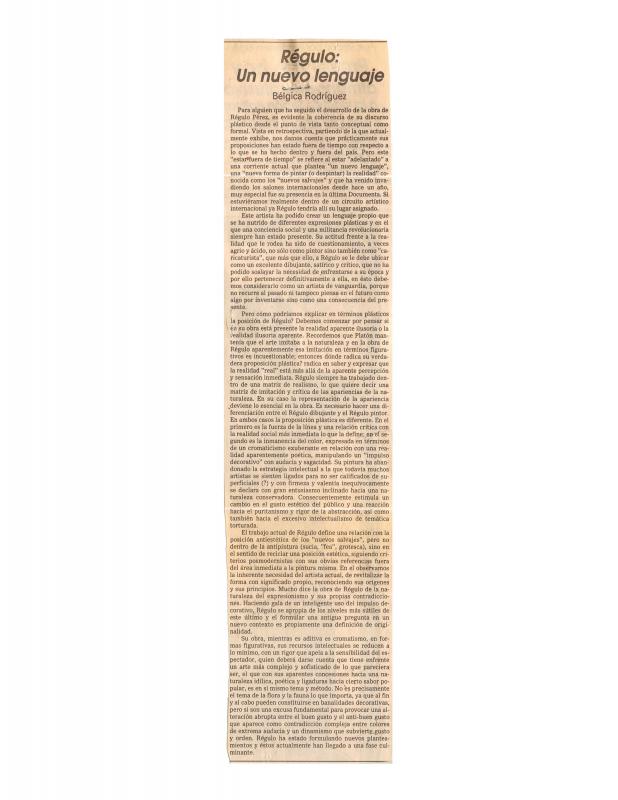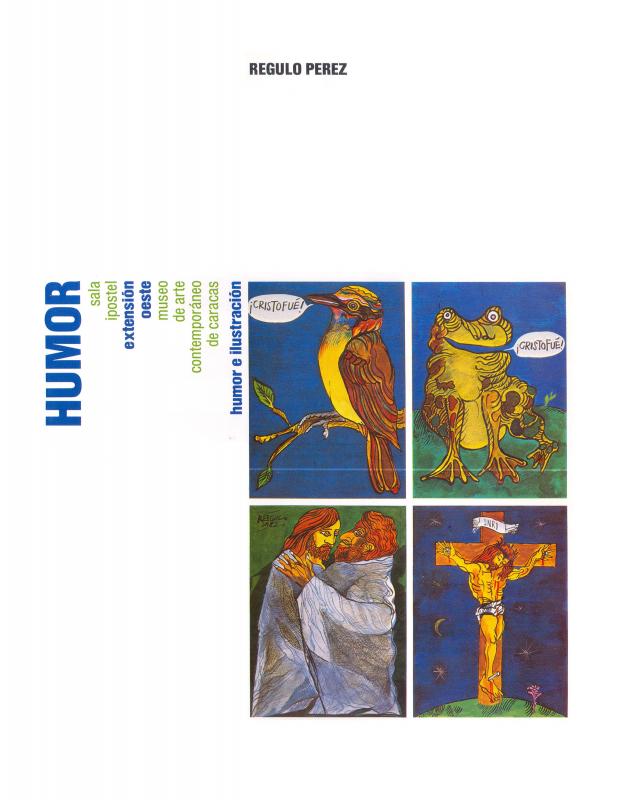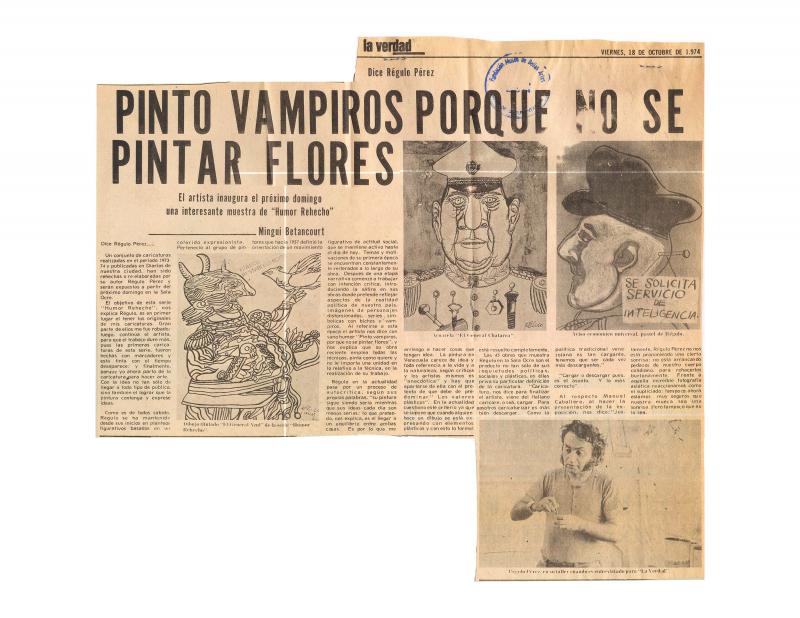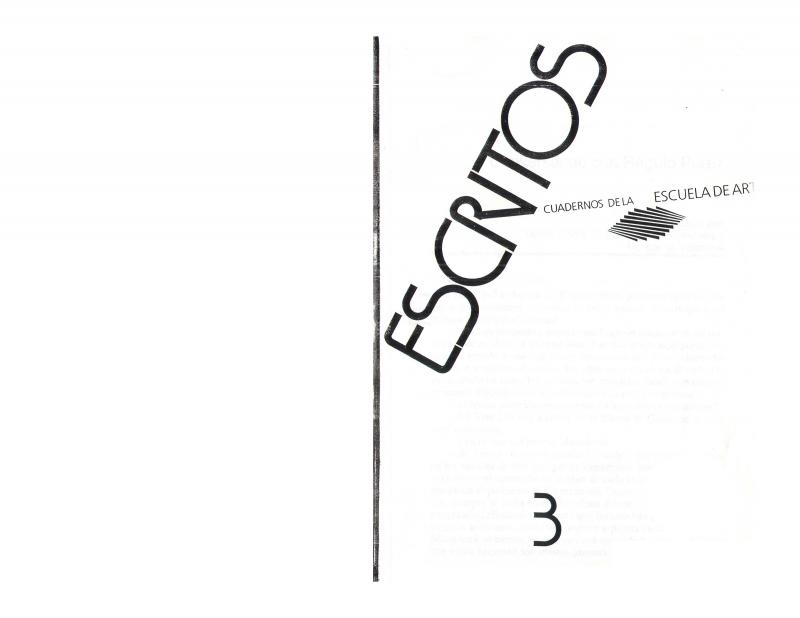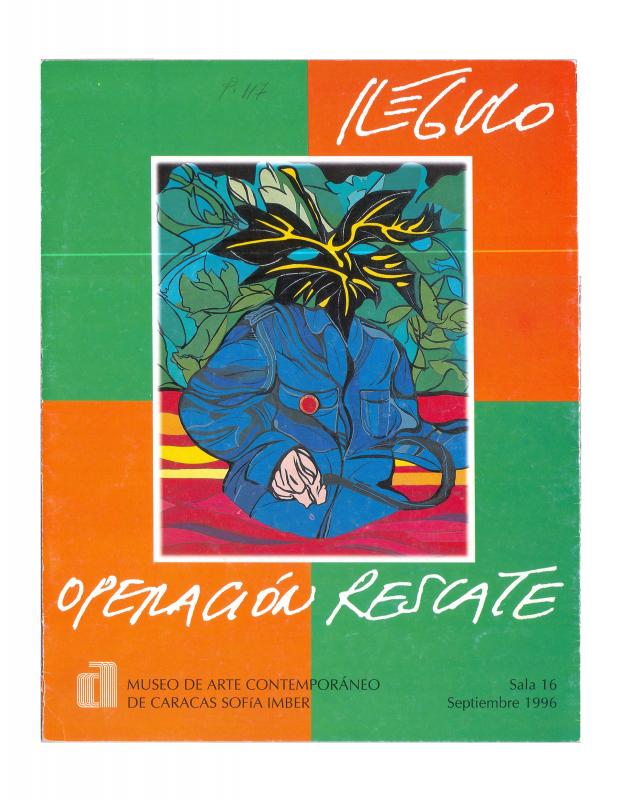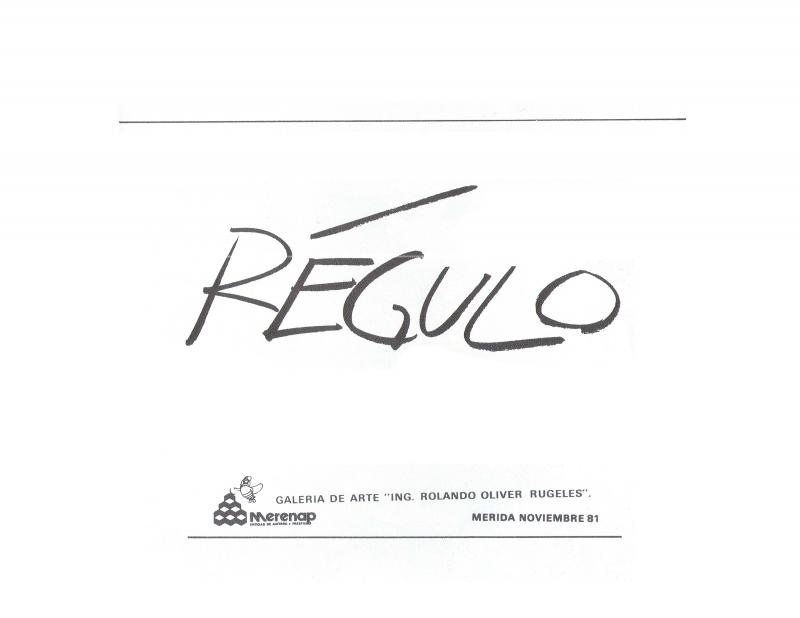Oswaldo Barreto wears his sociologist’s hat as he reviews the collection of painting by Régulo Pérez (b. 1929) at the Caracas, cara a cara exhibition at the Museo de Arte Contemporáneo de Caracas in 1980. Barreto uses chronological references as an organizing principle, recalling the Venezuelan artist’s experiences at different stages of his life and suggesting how those events influenced his work.
Though this is familiar ground that has already been explored by other reviewers of Pérez’s work, Barreto presents and scrutinizes it with the authority granted him by his position as a sociologist. In point of fact, his references are more concerned with the troubled man who seeks to express himself through his art than with Régulo Pérez’s actual work as a finished product. Barreto notes the artist’s personal quests, his “long approach,” and his repeated portrayal of the contrast between the city and nature.
This essay is virtually the only existing sociological review of the works painted by Régulo Pérez. The author looks beyond the simple, circumstantial influences in the artist’s creative process and lists Régulo Pérez’s historical, political, social, economic, and even personal connections to his surroundings, suggesting that all those relationships were what gradually defined the man/artist.
Regarding the artist’s work, see by Rafael Pineda “Régulo y el eje Orinoco – Pintura” [doc. no. 1154220] and “Naturaleza y cultura” (original text taken from the catalogue “Régulo en Acquavella,” Caracas, 1981)” [doc. no. 1154268]; the essay by Bélgica Rodríguez “Régulo: un nuevo lenguaje” [doc. no. 1157776]; the text by Roberto Guevara “Régulo y la cultura visual” [doc. no. 1157759]; the review by Jesús Sanoja Hernández “Prólogo serio para el más serio de nuestros humoristas” [doc. no. 1154188]; by Mingui Betancourt “Pinto vampiros porque no sé pintar flores” [doc. no. 1157808]; the interview “Conversando con Régulo Pérez: entrevistado por Berna Parra, María Eugenia Sánchez y Margarita Villarroel” [doc. no. 1154236]; the partial chronological account by Ivette Villarreal “La salvación por la imagen” [doc. no. 1154300]; the copy of the letter that Pérez wrote to refuse the First Prize for Painting awarded at the Exposición Nacional de Artes Plásticas in 1972, in the article “El pintor Régulo Pérez rechazó 1.er premio de la Exposición Nacional de las Artes Plásticas” [doc. no. 1157824]; and his article “Entrevistas imaginarias” [doc. no. 1154284].



